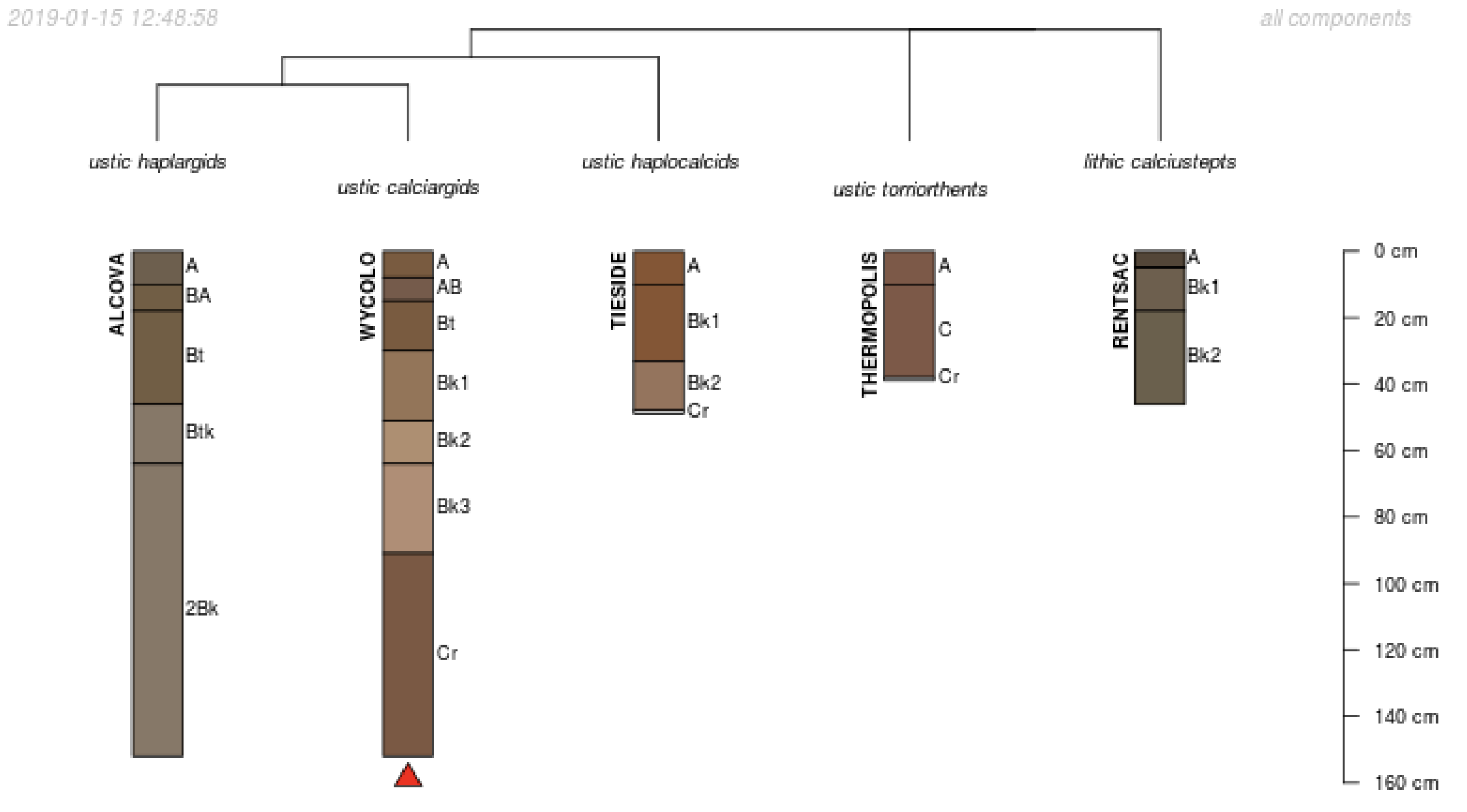9.9: Laramie's Local Soils
- Page ID
- 14682
An example of one of the most common local soils is the Wycolo series (Source: Albany County (Albany County Area), Wyoming; 1991. Soil Survey Report).
Wycolo Series
The Wycolo series consists of moderately deep, well drained soils that formed in materials derived from interbedded limestone, redbed sandstone, and shale. Wycolo soils are on uplands, structural benches, and strath terraces. Slopes range from 2 to 20 percent. The soils formed in materials weathered from interbedded limestone, redbed sandstone, and shales. Elevations are 6,000 to 7,800 feet. The mean annual precipitation is 10 to 14 inches of which at least half occurs in the spring months. The mean annual temperature is 40 to 45 degrees F., and the frost-free season is 85 to 110 days.
Well drained; runoff is medium; moderate permeability. These soils are used mainly as rangeland. Native vegetation is western wheatgrass, needle and thread, and big sagebrush.

Read through and complete the following activity and questions. All questions should be answered and completed labs are due at the end of the laboratory period. No late work will be accepted.


